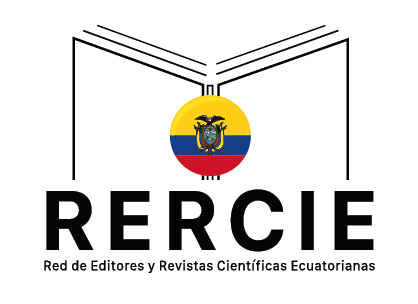Legal Approaches to Artificial Intelligence Concept and Essence Definition
Palabras clave:
artificial intelligence, conscious-volitional behaviour, legal category, cognition, intelligence.Resumen
In this paper, it was tried to provide a comprehensive analysis of the term "artificial intelligence" and its essence definitions existing in the scientific literature. It is noted that nowadays, they developed several approaches to the interpretation of "artificial intelligence" definitions. At the same time, despite a wide range of studies on the interpretation, various areas of application, as well as the legal aspects of "artificial intelligence" concept, the unexplored horizons of this definition are quite wide. For this reason, the level of interest in the multidimensional consideration and analysis of the term "artificial intelligence" is quite high, which allows us to talk about fairly broad prospects for the development of legal approaches to its study.It is shown that the most convincing and consistent position of those scientists who are inclined to describe the concept under consideration by designating its essential properties and signs. These properties and signs of artificial intelligence include the ability to reason and control, legal understanding and legal awareness, learning and development, autonomy and decision making, etc.
Descargas
Referencias
Andrew, A. M. (1991). Continuity and artificial intelligence. Kybernetes.
Begishev, I. R. (2020). Organization of the hacker community: Criminological and criminal law aspects. All-Russian Criminological Journal, 14(1), 96–105.
Begishev, Ildar R., Latypova, E. Y., & Kirpichnikov, D. V. (2020). Artificial Intelligence as a Legal Category: Doctrinal Approach to Formulating a Definition. Actual Probs. Econ. & L., 79.
Begishev, Ildar R., & Khisamova, Z. I. (2018). Criminological Risks of Using Artificial Intelligence. Russian Journal of Criminology, 12(6), 767–775.
Bellman, R. (1978). An introduction to artificial intelligence: Can computers think? Thomson Course Technology.
Bikeev, I., Kabanov, P., Begishev, I., & Khisamova, Z. (2019). Criminological risks and legal aspects of artificial intelligence implementation. Proceedings of the International Conference on Artificial Intelligence, Information Processing and Cloud Computing, 1–7.
Bolotova, L. S. (2012). Artificial intelligence systems: Models and knowledge-based technology. М. 2012. 664 p.
Bostrom, N. (2003). Ethical issues in advanced artificial intelligence. Science Fiction and Philosophy: From Time Travel to Superintelligence, 277–284.
Broadhurst, R., Woodford-Smith, H., Maxim, D., Sabol, B., Orlando, S., Chapman-Schmidt, B., & Alazab, M. (2017). Cyber Terrorism: Research Review: Research Report of the Australian National University Cybercrime Observatory for the Korean Institute of Criminology. Available at SSRN 2984101.
Chelioudakis, E. (2017). Deceptive AI machines on the battlefield: Do they challenge the rules of the Law of Armed Conflict on military deception? Available at SSRN 3158711.
Delvaux, M. (2016). Draft report with recommendations to the Commission on Civil Law Rules on Robotics. European Parliament Committee on Legal Affairs Http://Www. Europarl. Europa. Eu/Sides/GetDoc. Do.
Dneprovskaya, M. A., & Abramitov, S. A. (2020). Digital Technologies in Activities of Russian Courts: Prospects of Artificial Intelligence Application. 2nd International Scientific and Practical Conference “Modern Management Trends and the Digital Economy: From Regional Development to Global Economic Growth”(MTDE 2020), 209–213.
Doroganov, V. S., & Baumgarten, M. I. (2013). Possible problems arising during artificial intelligence development. Vestnik Kuzbasskogo Gosudarstvennogo Tekhnicheskogo Universiteta, 4, 98.
Good, I. J. (1966). Speculations concerning the first ultraintelligent machine. In Advances in computers (Vol. 6, pp. 31–88). Elsevier.
Jones, M. T. (2004). Artificial intelligence programming in applications. M.: DMK Press.
Khisamova, Z., Begishev, I., & Gaifutdinov, R. (2019). On methods to legal regulation of artificial intelligence in the world. SCOPUS-2019-9-1-SID85075304864.
Khisamova, Z. I., & Begishev, I. R. (2019a). Criminal liability and artificial intelligence: Theoretical and applied aspects. All-Russian Journal of Criminology, 13(4), 574.
Khisamova, Z. I., & Begishev, I. R. (2019b). Legal regulation of artificial intelligence. Baikal Research Journal, 10(2).
Khisamova, Zarina I., Begishev, I. R., & Sidorenko, E. L. (2019). Artificial Intelligence and Problems of Ensuring Cyber Security. International Journal of Cyber Criminology, 13(2), 564–577.
Kurzweil, R., Richter, R., Kurzweil, R., & Schneider, M. L. (1990). The age of intelligent machines (Vol. 579). MIT press Cambridge.
McCarthy, J., Minsky, M. L., Rochester, N., & Shannon, C. E. (2006). A proposal for the dartmouth summer research project on artificial intelligence, august 31, 1955. AI Magazine, 27(4), 12–12.
McCulloch, W. S. (2016). Embodiments of mind. MIT press.
McCulloch, W. S., & Pitts, W. (1990). A logical calculus of the ideas immanent in nervous activity. Bulletin of Mathematical Biology, 52(1–2), 99–115.
Morhat, P. M. (2018). Legal personality of artificial intelligence in the field of intellectual property law: Civil law problems. Doctor Thesis. Moscow: Russian State Academy of Intellectual Property.
Nilsson, N. J. (2009). The quest for artificial intelligence. Cambridge University Press.
Nilsson, N. J., & Nilsson, N. J. (1998). Artificial intelligence: A new synthesis. Morgan Kaufmann.
Pitts, W. (1942). Some observations on the simple neuron circuit. The Bulletin of Mathematical Biophysics, 4(3), 121–129.
Rockwell, A. (2017). The History of Artificial Intelligence. Harvard University.
Russell, S., & Norvig, P. (2002). Artificial intelligence: A modern approach.
Searle, J. R. (1980). Minds, brains, and programs. & &, 417–457.
Slagle, J. R. (1971). Artificial intelligence: The heuristic programming approach. McGraw-Hill.
Stephenson Smith, S. (2003). The new international webster’s comprehensive dictionary of the english language: Deluxe encyclopedic edition.
Sukhodolov, A. P., Bychkov, A. V., & Bychkova, A. M. (2020). Criminal Policy for Crimes Committed Using Artificial Intelligence Technologies: State, Problems, Prospects.
Turing, I. B. A. (1950). Computing machinery and intelligence-AM Turing. Mind, 59(236), 433.
Winston, P. H., & Brown, R. H. (1984). Artificial intelligence: An MIT perspective. MIT Press.
Yampolskiy, R. V. (2020). On Defining Differences Between Intelligence and Artificial Intelligence. Journal of Artificial General Intelligence, 11(2), 68–70.
Yuri, K. (2020). Evolution of creative thought with elements of artificial intelligence on example of synthesis of clamping mechanisms. Machines. Technologies. Materials., 14(6), 230–236.















